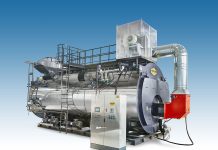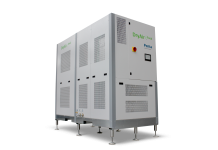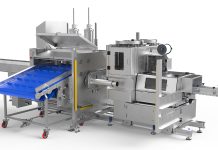Coffee roasting is one of the various coffee processing phases, characterised by different steps, as:
- Mixing of various raw aromatic blends
- Roasting
- Cooling
- Grinding (if required)
- Packaging
In the roasting phase, green coffee beans are introduced in roasting machines, where, by means of rotary drums, they are accurately roasted at a temperature between 210 and
230°C for approximately 15 minutes. The roasted coffee is then unloaded into a pan for cooling and equipped with two motors: one, located underneath the pan, provides for
warm-air suction, whereas the second is mounted above it and produces cold air. Homogeneous coffee cooling is favoured by continuously turning blades that mix the roasted
beans for approximately 5 minutes. During the roasting process, coffee beans are subject to several physical and chemical modifications. On one side these modifications
provide for the development of typical organoleptic properties (such as flavour, colour, taste, and body) from which depends the acceptability of the roasted product, and on
the other side they contribute to creating a particularly fragile and brittle structure that facilitates the next processing steps. Polymerization and pyrolysis processes, occurring in the last roasting phases and which do only perceptively affect the components of other fractions, lead to the creation of volatile components, responsible for the typical aroma of roasted coffee. Temperature increase is also responsible for the physical modifications occurring during the roasting process.
The change in colour is probably one of the most visible physical alterations, caused by temperature-related chemical reactions interesting the glucidic component, as the caramelization and the non-enzymatic browning(or Maillard reactions). The yellow-green colour typical of raw coffee changes into increasingly darker shades of brown, until it reaches the typical black-brown colour of roasted coffee. Inside the bean core, the colour modification is delayed compared to the outer area, whereas lipids come to the surface, contributing to the bean’s slightly translucent aspect. During the first heating phase, coffee beans undergo to a progressive weight reduction, initially caused by the loss in water and, in a second time, when higher temperatures are reached, by the thermal decomposition of some components into volatile substances.





